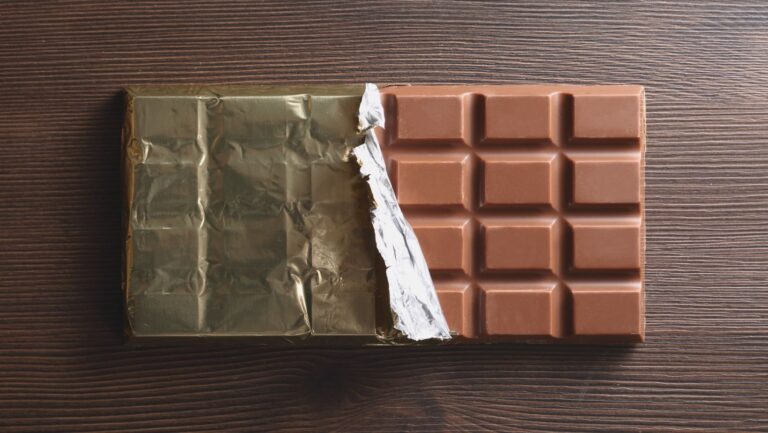If your child’s eyes light up at the mere mention of chocolate, you’re not alone. But what if their favorite treat wasn’t just about indulgence? Science is now uncovering surprising ways in which high-quality chocolate—specifically cacao—can influence brain function, memory, and even mood. Could a little chocolate actually be good for your child’s cognitive development? Let’s explore the fascinating connection between chocolate and the brain.
Cacao vs. Cocoa – Why It Matters
Not all chocolate is created equal. The difference between cacao and cocoa comes down to how it’s processed. Cacao is the raw, unprocessed form of chocolate that retains powerful nutrients like flavonoids, magnesium, and antioxidants. Cocoa, on the other hand, is processed at high temperatures, stripping away many of these benefits, and often mixed with excessive sugar and additives.
For parents looking to provide their children with a brain-boosting snack, switching to minimally processed cacao hot chocolate instead of traditional sugary mixes is a small but powerful change.
The Brain-Boosting Compounds in Cacao
Cacao is packed with compounds that can benefit brain health:
- Flavonoids: These natural antioxidants enhance blood flow to the brain, improving memory and learning.
- Magnesium: Essential for brain function, magnesium helps regulate neurotransmitters that control mood and focus.
- Theobromine: Unlike caffeine, this mild stimulant offers an energy boost without the crash.
- Phenylethylamine (PEA): This compound promotes feelings of happiness and alertness, making it a natural mood enhancer.
Can Chocolate Make Kids Smarter?
While chocolate alone won’t turn your child into a genius, moderate consumption of flavonoid-rich cacao can improve working memory and cognitive performance.
Additionally, cacao contains magnesium, an essential mineral for brain function that helps regulate neurotransmitters responsible for mood and concentration. So, if your child struggles with attention span or focus, incorporating high-quality cacao into their diet could be a small yet significant step toward better brain health.
The Problem with Processed Chocolate
Most chocolates found in supermarkets contain minimal cacao and are instead filled with processed cocoa powder, milk solids, and excessive sugar. Not only does this dilute the cognitive benefits of real cacao, but the added sugar has been linked to behavioral issues and decreased academic performance in children.

Some mass-produced chocolates may even contain heavy metals like lead and cadmium, which pose long-term health risks. Concerns over toxic ingredients in children’s food aren’t new—parents are already dealing with issues like exposure to harmful substances in baby food. Choosing natural, ethically sourced chocolate eliminates the risk of unwanted additives and ensures your child is getting the real benefits of cacao.
How to Introduce Healthier Chocolate to Your Child’s Diet
If you’re looking to transition your child away from sugar-laden chocolate, start by introducing them to cacao hot chocolate made with minimal ingredients. Unlike processed cocoa mixes, this version retains the rich, natural flavors of cacao while offering all the health benefits.
You can also experiment with homemade chocolate treats using organic cacao and natural sweeteners like coconut sugar or honey. This way, you control what goes into their food while ensuring they still get to enjoy their favorite treat.
Another great way to make the switch is by incorporating cacao into smoothies, oatmeal, or yogurt. Mixing cacao with naturally sweet fruits like bananas or berries can make it more palatable for children who are used to overly sweetened chocolates. Over time, their taste buds adjust, and they start appreciating the rich, deep flavor of real cacao.
The Science Behind Cacao and Mood Regulation
Beyond cognitive function, cacao also plays a role in emotional well-being. It contains compounds that stimulate the release of serotonin and dopamine, the neurotransmitters responsible for happiness and relaxation. This explains why chocolate is often associated with comfort and stress relief.
For children who experience anxiety or mood swings, a small serving of high-quality cacao can be a natural way to boost their mood without resorting to processed sugary snacks.
The Hidden Benefits of Ethical Chocolate Sourcing
Another advantage of switching to real cacao is the ethical aspect. Many mass-produced chocolates contribute to unfair labor practices and environmental degradation. When you choose cacao from ethical sources, you’re not only investing in your child’s health but also supporting sustainable farming practices and fair wages for farmers.
Small-batch chocolate makers who prioritize ethical sourcing often ensure their products retain the natural goodness of cacao without harmful additives. This means your child gets a purer, more nutritious treat while you support a system that values sustainability and fairness.
A Treat That’s Both Delicious and Nutritious
When chosen wisely, chocolate doesn’t have to be a guilty pleasure—it can be a smart addition to your child’s diet. By opting for minimally processed cacao products, you’re not just satisfying their sweet tooth but also providing a brain-boosting treat that supports cognitive development and overall well-being.

So, the next time your child asks for chocolate, consider offering them the real deal. Their brain will thank you for it.

